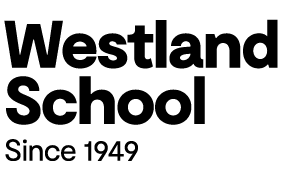Robert Vargas Field Trip
As part of their social studies curriculum, students in Groups Three and Five traveled downtown to speak with muralist Robert Vargas regarding his project “Los Angelus,” which will be the largest mural painted by one person to date. Here are a sample of the students’ questions:
What is the theme?
How many murals have you done?
Do you already know what you are going to do or are you in process?
What kind of paint do you use?
What are you thinking about when you paint?
How do you get permission to paint?
Do you use any symbolism?
What was the first mural you ever painted?
What image did you begin with?
How many years have you been painting?
What do you think the hardest thing to draw is?
Have you ever collaborated with other artists?
When do you think you’re going to be done?
How many hours do you work each day?
How much paint do you use?
Who or what taught you about Native Americans?
What do you do if you mess up?
If we were to study these questions from the perspective of an ethnographer, there are quintessential Westland values present throughout. From the practical questions to the more provocative, the children’s questions predominantly focus on process. While certainly the product and the final outcome is essential in life, Westland students know the power of process and how integral it is to living and learning. Robert Vargas ate up their questions with joy! He frequently commented on how impressed he was with their depth. He had important life lessons to share. For example, when asked about messing up, Robert Vargas nonchalantly quipped, “If you make a mistake, fix it. That’s going to be a recurring theme in life.” He added, “If there are no challenges, there are no solutions.”
Robert Vargas then took the students, teachers, and parent chaperones on a mini walking tour of his other downtown murals. The students comfortably and excitedly walked the streets, appearing more as travelers and citizens rather than tourists. Robert Vargas talked again and again about themes of hope, determination, and how our differences are what make us great as a Los Angeles community. He reflected on his own Mexican and Native American heritage in the context of today’s Los Angeles. The field trip was a reminder of how powerful experiential education is, how powerful story is, how powerful it is to learn from experts in the field, and how powerful it is to go on an adventure.
